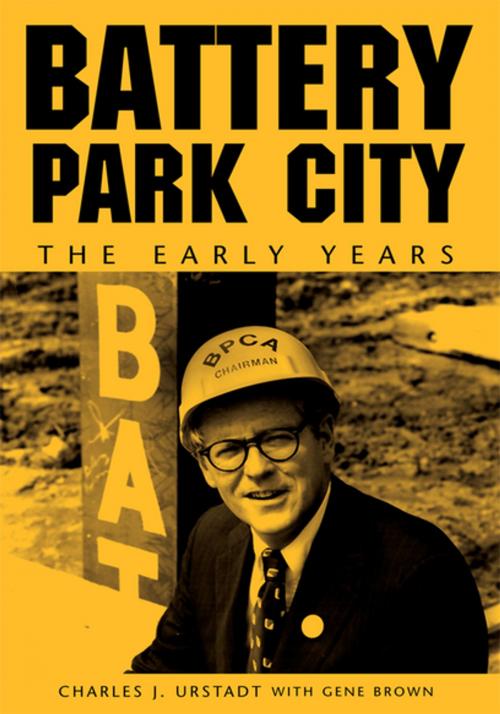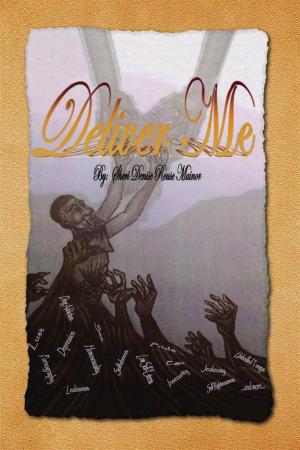| Author: | Charles J. Urstadt | ISBN: | 9781469107882 |
| Publisher: | Xlibris US | Publication: | June 7, 2005 |
| Imprint: | Xlibris US | Language: | English |
| Author: | Charles J. Urstadt |
| ISBN: | 9781469107882 |
| Publisher: | Xlibris US |
| Publication: | June 7, 2005 |
| Imprint: | Xlibris US |
| Language: | English |
Battery Park City is a special place, and superlatives have come easily to those who have written about it. It is one of the most significant new towns ever built in America, constructed by private developers on landfill, with an infrastructure financed by the sale of bonds by a state-created public benefit corporation.
Its successful mix of attractive office and residential buildings has been the major contributor to the revitalization of New York Citys downtown. Its also paid off literally. The Battery Park City Authority, the public benefit corporation that was the driving force behind the entire development is in the black and, indeed, generates more than $100 million a year in profit without the City or State having a cent invested in the venture.
The development is even rich culturally. Its bookended on its south end by The Museum of Jewish Heritage, which has the most important collection memorializing the Holocaust outside of Washington D. C.s Holocaust Museum, and on the north by the new home of Stuyvesant High School, which most years sends more graduates to Harvard than any other high school in America.
Amidst parks, sculpture and apartments providing homes for almost 10,000 people, most of whom walk to work, stands the New York Mercantile Exchange and the imposing World Financial Center. Within the shouting distance of young children on scooters and adolescents on skateboards are long town cars, waiting to whisk executives to their next appointment.
But if anything truly merits superlatives, its the public amenities that grace this city extending out into the water from lower Manhattan. On a summer Sunday, its long and graceful esplanade hosts thousands of bikers, hikers and people out for a stroll along the Hudson River. The area is thronged at lunchtime. And after work on any pleasant afternoon, Battery Park Citys yacht cove is ringed with workers unwinding after a busy day and its harbor side restaurants are crowded with diners enjoying the spectacular view.
The citys financial powerhouses charter yachts with names such as Royal Princess and Excalibur, anchored in the cove, for business-promoting cocktail and dinner parties. But you dont have to be rich and powerful to enjoy what the development has to offer. The indoor concerts under the high-arching crystal vault filled with palm trees and bright flowers, part of the World Financial Center just behind the cove, are free and open to the public.
Signs on the esplanade caution bikers and skaters to Yield to Pedestrians. But one of the marvels of Battery Park City is that the whole development actually does that. Here in the heart of Manhattan, on the island that the automobile long ago conquered, the public spaces have been planned for people on foot. The spaces are broad and open, the streets just wide enough to provide necessary vehicular access.
Already, although building continues on its several empty lots, Battery Park City has become one of New York Citys landmarks, attracting foreign visitors as well as tourists from around America as one of Gothams must-see sights. As with any landmark, it now seems to own the space it occupies. Despite the evident newness of everything in the development, its component parts are beginning to take on an air of inevitability.
But the truth is that there was nothing inevitable about the development of Battery Park City. Every element of it was a battleground over which politicians and planners fought. In fact, this marvelous and extremely valuable asset to Americas greatest city might just as easily have remained under water.
Thats the point of this book. Theres something deceptively inevitable about land, steel and concrete. With the passage of time it becomes harder and harder to imagine that the land wasnt there, that the
Battery Park City is a special place, and superlatives have come easily to those who have written about it. It is one of the most significant new towns ever built in America, constructed by private developers on landfill, with an infrastructure financed by the sale of bonds by a state-created public benefit corporation.
Its successful mix of attractive office and residential buildings has been the major contributor to the revitalization of New York Citys downtown. Its also paid off literally. The Battery Park City Authority, the public benefit corporation that was the driving force behind the entire development is in the black and, indeed, generates more than $100 million a year in profit without the City or State having a cent invested in the venture.
The development is even rich culturally. Its bookended on its south end by The Museum of Jewish Heritage, which has the most important collection memorializing the Holocaust outside of Washington D. C.s Holocaust Museum, and on the north by the new home of Stuyvesant High School, which most years sends more graduates to Harvard than any other high school in America.
Amidst parks, sculpture and apartments providing homes for almost 10,000 people, most of whom walk to work, stands the New York Mercantile Exchange and the imposing World Financial Center. Within the shouting distance of young children on scooters and adolescents on skateboards are long town cars, waiting to whisk executives to their next appointment.
But if anything truly merits superlatives, its the public amenities that grace this city extending out into the water from lower Manhattan. On a summer Sunday, its long and graceful esplanade hosts thousands of bikers, hikers and people out for a stroll along the Hudson River. The area is thronged at lunchtime. And after work on any pleasant afternoon, Battery Park Citys yacht cove is ringed with workers unwinding after a busy day and its harbor side restaurants are crowded with diners enjoying the spectacular view.
The citys financial powerhouses charter yachts with names such as Royal Princess and Excalibur, anchored in the cove, for business-promoting cocktail and dinner parties. But you dont have to be rich and powerful to enjoy what the development has to offer. The indoor concerts under the high-arching crystal vault filled with palm trees and bright flowers, part of the World Financial Center just behind the cove, are free and open to the public.
Signs on the esplanade caution bikers and skaters to Yield to Pedestrians. But one of the marvels of Battery Park City is that the whole development actually does that. Here in the heart of Manhattan, on the island that the automobile long ago conquered, the public spaces have been planned for people on foot. The spaces are broad and open, the streets just wide enough to provide necessary vehicular access.
Already, although building continues on its several empty lots, Battery Park City has become one of New York Citys landmarks, attracting foreign visitors as well as tourists from around America as one of Gothams must-see sights. As with any landmark, it now seems to own the space it occupies. Despite the evident newness of everything in the development, its component parts are beginning to take on an air of inevitability.
But the truth is that there was nothing inevitable about the development of Battery Park City. Every element of it was a battleground over which politicians and planners fought. In fact, this marvelous and extremely valuable asset to Americas greatest city might just as easily have remained under water.
Thats the point of this book. Theres something deceptively inevitable about land, steel and concrete. With the passage of time it becomes harder and harder to imagine that the land wasnt there, that the















